Upon arriving in Dresden, my first destination was the fabled Green Vault. The Green Vault or Grünes Gewölbe, is Europe’s largest collection of precious historical treasures. It was the first public museum in all of Europe to feature a collection of crown jewels from. Also included in this royal collection, are amazing prizes only imagined in pirate hordes. Bowls carved out of crystal, agate and ivory, golden figurines with multicoloured gems and the most impressive green diamond in the world. It’s truly a jewel box that visitors always walk away from in awe and wonder. It is truly one of the greatest museums in Germany and one you definitely have to visit on your next trip to Dresden!
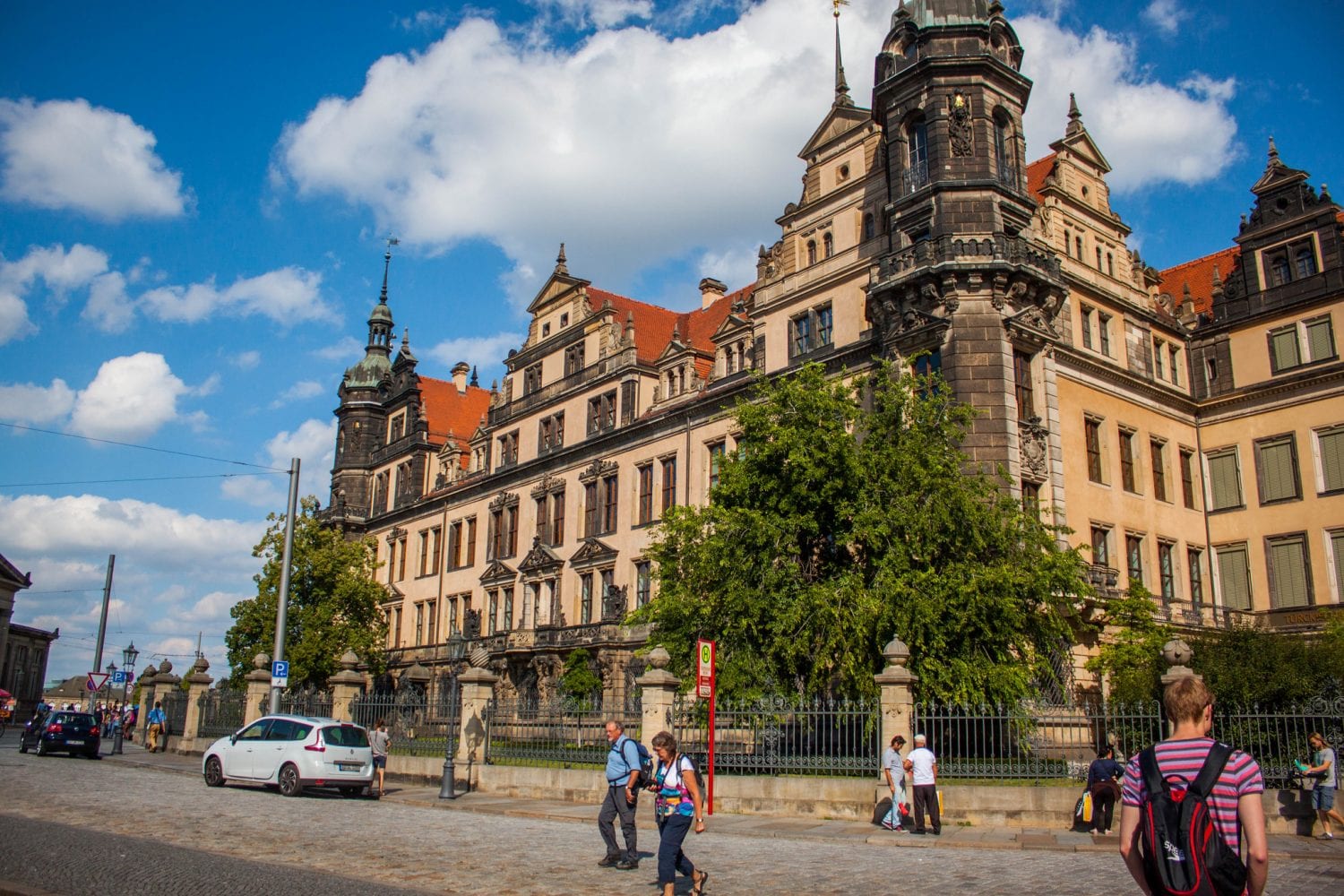
Although you might expect the vault to be coloured green, the name comes from an altogether different reference. During its construction, the columns and bases that held up the vaulted ceiling inside were painted green. Hence the name the “Green Vault.” A German Emerald city.
- History
- Tickets
- The Great Green Vault Robbery
- The Vorgewölbe (Entrance Foyer)
- The Bernsteinkabinett (Amber Cabinet)
- The Elfenbeinzimmer (Ivory Room)
- The Weißsilberzimmer (Silver Room or White Silver Room)
- The Silbervergoldete Zimmer (Silver Gilt Room)
- The Pretiosensaal (Pretiosa Room or Hall of Treasures)
- The Wappenzimmer (Coats of Arms Room, Heraldry Room)
- The Juwelenzimmer (Jewel Chamber)
- The Bronzezimmer (Bronze Room)

History
Augustus the Strong was the ruler of Saxony and lived in Dresden in the 18th century. Augustus was a very wealthy man and adored his city. He spent time, money and effort to make Dresden the jewel of all Europe. The King wanted the best artists from all over the world to congregate there to live, work and create commissions for his kingdom.
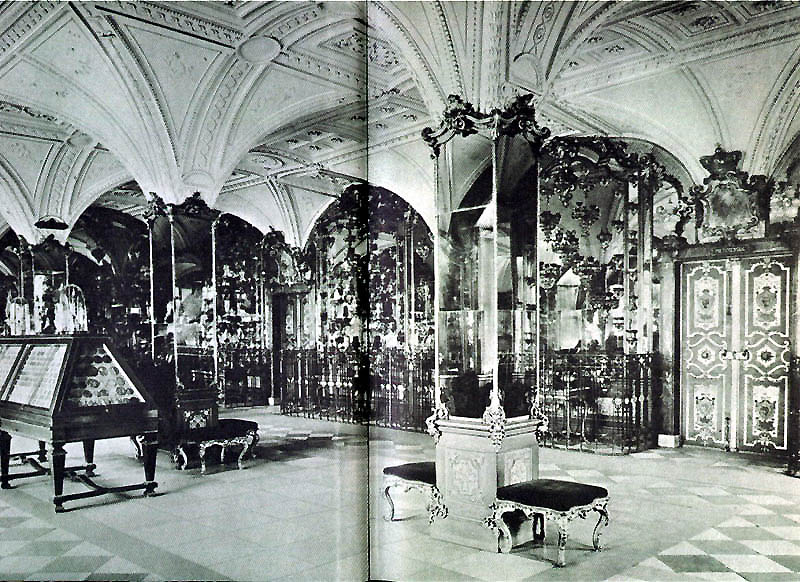
Today, Dresden is not as well known as Florence or Berlin, but in the 18th century, it was referred to as the Venice of the Elbe. Augustus’ had some of the finest jewellers, metalworkers and artists working round the clock to create treasures that would rival any royal collection worldwide. But the treasurer’s served a practical purpose in addition to looking so beautiful. They were an expression of wealth and absolutist power to any visiting officials that spoke volumes of Dresden’s regime.

WWII
Dresden was very heavily bombed during WWII. But early warnings allowed the King’s men to hide the treasures in a fortress far away from the ruined city. Alas, this did not keep them safe forever. When the Red Army invaded, they stole the collection and brought it as a prize to Moscow and Kyiv. After years and years of negotiation, the pieces were returned to Dresden.
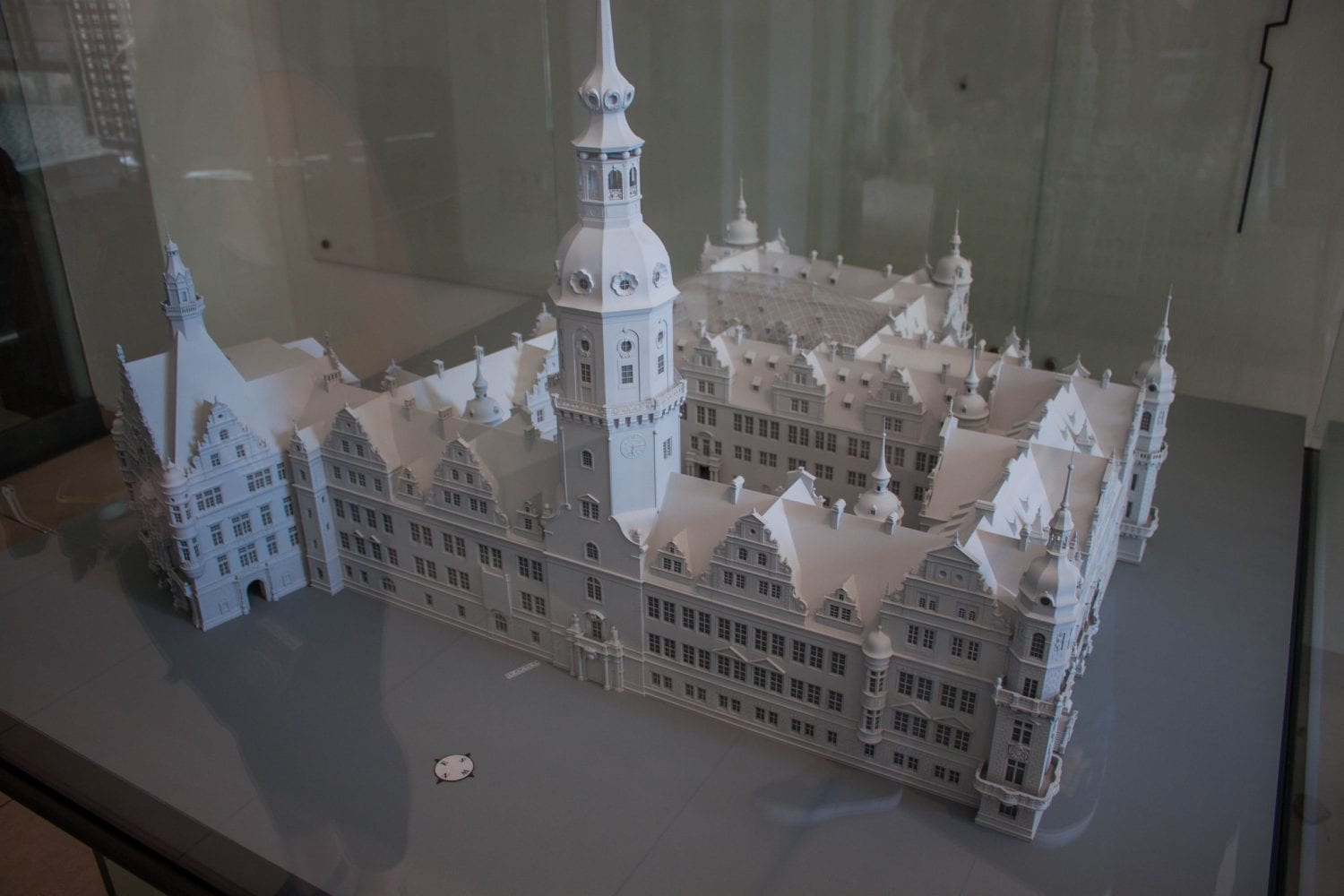
During the years of negotiation, the city of Dresden set about reconstructing the Green Vault. And in 2005, the collections and restored interiors were returned to the public. The baroque galleries and ornate displays have all been rebuilt in the same brilliant style. Today, you can walk through the rooms just as hundreds of people have done years before.

Tickets
The lineup for tickets to these galleries was intense. Only so many tickets are allotted per hour to limit the number of people they let inside. To ensure you get to visit, you can always buy your tickets online in advance. You can buy a single ticket to the Green Vault or a combined ticket to the Royal Palace that will also get you admission to the New Green Vault, Turkish Chamber, Renaissance Wing, Hall of the Giants, Royal State Apartments of August the Strong and the Porcelain Cabinet, Firearms Gallery and special exhibitions in the Kupferstich-Kabinett.
Prices: Green Vault Adults €14.00 | Combined Ticket €24.50

We arrived a little before our designated ticket time, so we enjoyed our coffee while perusing the large art bookstore inside the museum. This place was a dream; there were hundreds of art books, paper doll collections, postcards, jewellery pieces, and more. It was probably my favourite bookstore we visited on our entire trip. I could have just lived here.

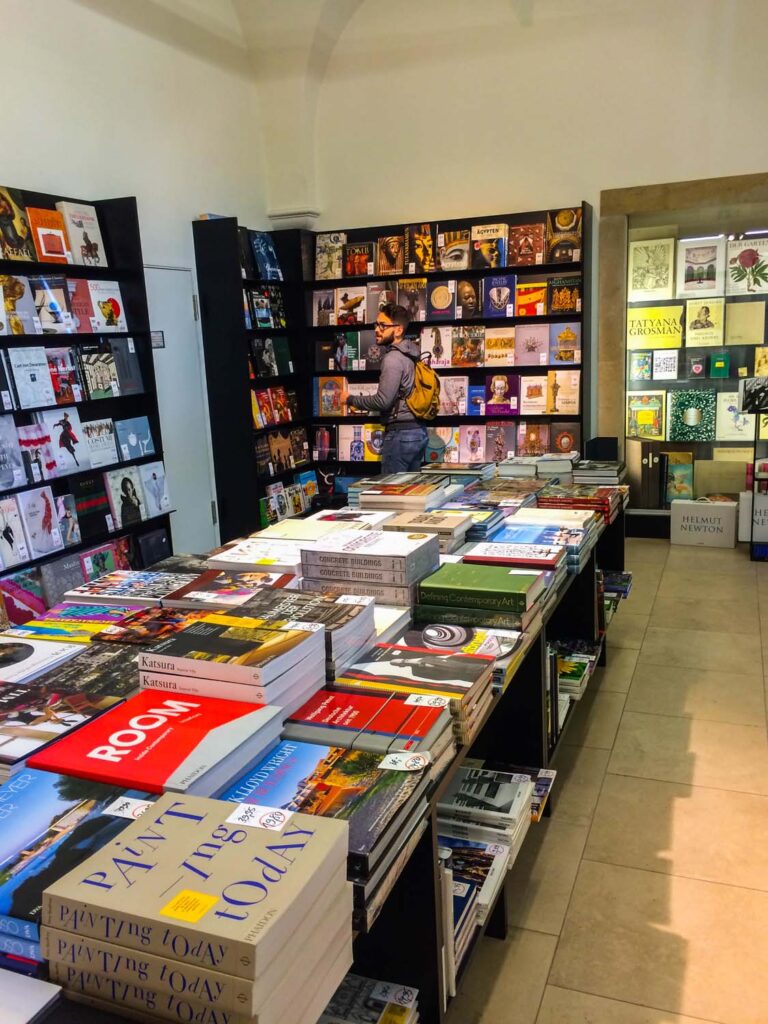
The Great Green Vault Robbery
Another reason that they are so strict about limiting the numbers inside the green vault is due to the modern-day robbery that took place here in 2019. On November 25th, a collection of royal jewellery was stolen from the museum. Included in the heist was a 49-carat Dresden White Diamond, the diamond-laden breast star of the Polish Order of the White Eagle, which belonged to the King of Poland, a hat clasp with a 16-carat diamond, a diamond epaulette, and a diamond-studded hilt containing nine large and 770 smaller diamonds, along with a matching scabbard. Thankfully, the collection’s most significant treasure, the green diamond, was away on loan at the MET Gallery in New York.
The worth of stolen items was valued at over €1 billion! But it was the cultural significance that was truly priceless. The Green Vault closed its doors to the public after the theft. Thankfully, in 2022 thirty-one of the stolen items were recovered by the German authorities. Today, the museum plans to reopen in February 2023 to allow guests back inside to see the collection again.
The Vorgewölbe (Entrance Foyer)
Before entering the museum, you must enter a large waiting room, which features an introductory audio program. Also in this room are various pieces from the collection that aren’t currently displayed in the gallery. Also in this gallery are photos of the Green Vault taken before WWII. This gives you an idea of the extent of destruction and reconstruction required to bring this place back to life after the Dresden bombings.
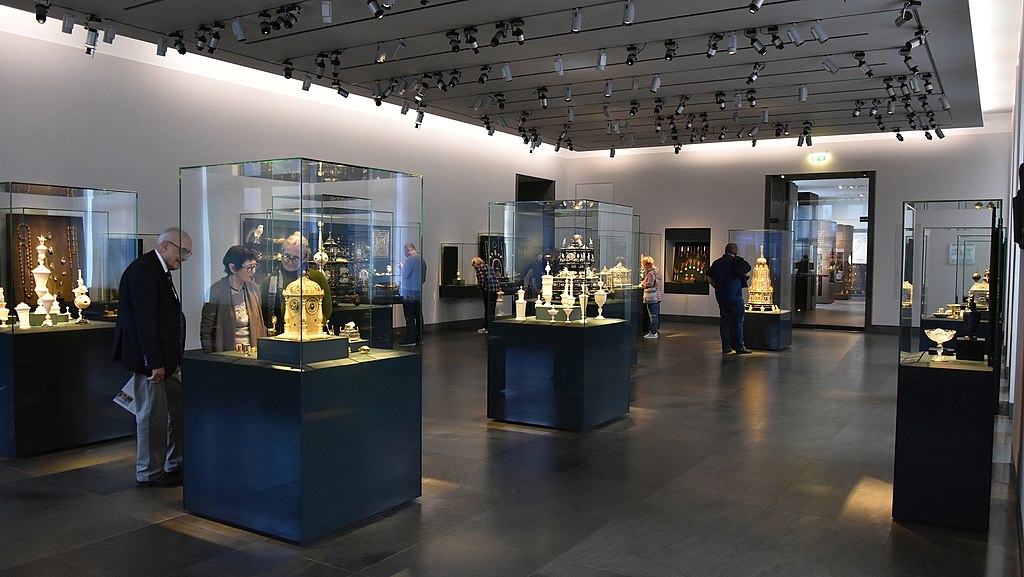
Also included in the waiting area, are a collection of enamel works from Limoges and other ceramics that date back to the Middle Ages and early Renaissance.
No Photo Policy
You are not allowed to take pictures inside the gallery. A policy which always pains me. But especially after the rubbery, they are so careful about the security of this precious museum. But in not allowing you to take photos, you are forced to truly immerse yourself without distraction into exploring the collection.
The Displays
When it was time to enter the gallery, you approached a set of glass doors with your ticket and were quickly given a once-over by security. Then you walk through a dust-proof double door which sucks out all the air from your entering before opening the second set of doors. This is because everything isn’t behind glass when you are in the gallery. The tiny pieces of the collection are displayed on gilt shelves, which hover like flying carpets against mirrored walls, just as the King once displayed them.
The Bernsteinkabinett (Amber Cabinet)
The first room you enter after exiting the spaceship-like dust-proof room is the Bernsteinkabinett or the Amber Cabinet room. The exhibit includes 16th-century vessels, bowls, ceremonial cutlery and statuettes produced in the amber workshops in Königsberg and Danzig. Amber art was thought to be the most luxurious of all the art forms, so it was no surprise that it found its way into royal chambers.
The King of Prussia gave many of the pieces to Augustus the Strong. Prussia was then famous for its skilled Amber sculptures. The small Amber Cabinet, the showpiece of this room, was one of those gifts. Its incredible handwork is astonishing. The tiny amber drawers with inlaid gold are fantastic. There is something about Amber’s art that is transfixing. It swirls and changes shape as the light reflects upon its glasslike surface.
The Elfenbeinzimmer (Ivory Room)
After the Amber room, you enter the Elfenbeinzimmer (the Ivory Room). Save for a few numbered plaques, this room almost doesn’t feel like a museum. It only feels like you’re walking through a beautiful house you’ve been invited into. The small groups allow the space not to feel overcrowded. Everyone respects the silence, and despite being a touristy place, it does feel relatively peaceful.
Atop all the shelves were a variety of small carved statues made from pure ivory. The ivory towers with impossibly tiny spirals inside are still one of the most amazing pieces of art and engineering. I cannot imagine how skilful and still those hands who made that must be. The bright white ivory is set against dark terracotta marble and a rich red and black tiled floor. Creating the most luxurious juxtaposition.
The Weißsilberzimmer (Silver Room or White Silver Room)
The next room is the Weißsilberzimmer (the White Silver Room). This room displays some of the finest examples of silver plates, flatware, buffets, oversized silver vessels and large pieces for dinner service from Augustus the Strong. This room is painted floor-to-ceiling emerald green and trimmed in gold to contrast the silver on display. The vaulted ceilings are bright white and accented with elaborate details.
These silver pieces are some of the best examples of silversmith artwork from the 17th and 18th centuries. You won’t see any pieces in here from the 19th century, as most silver from that era was melted down to fund the crown’s dwindling bank account. One of the most important treasures from this room is a solid gold drinking bowl from Ivan the Terrible. One of Augustus’ prized possessions.
Along one wall, are shelves are dedicated to the gold ruby glass of the royal palace. Its dark red colour pops against the green walls. The red colour was produced by adding gold chloride as it cooked. The ruby glass was frequently associated with magical powers. Coral was also thought to have magical properties and, as such, was incorporated into many silver gilt designs from the 17th-18th century.
The Silbervergoldete Zimmer (Silver Gilt Room)
As you pass through the Emerald green of the White Silver Room, you come upon the Silbervergoldete Zimmer (the Silver Gilt Room). In contrast to the previous one, this room is painted a deep vermillion. The mirrors in this room are smaller but formed into various baroque shapes. This room features gilded silver pieces, gold drinking vessels, and carved figurines. Most figurines feature Greek myths’ stories, but some also feature historical figures.
One of the most striking pieces in this room is a jewellery box made of gilded silver, mother of pearl and precious stones. It was a Christmas gift that Christian I gave his wife Sophie in 1585. Inside the lid of the box was once a tiny clock, but only fragments of the clock have been preserved. One can only imagine which precious jewels Sophie kept inside this box.
The Pretiosensaal (Pretiosa Room or Hall of Treasures)
As you enter the next room, you immediately notice that this is the largest of all the rooms. This is the Pretiosensaal (Hall of Treasures). This room reminded me greatly of the Chandelier Gallery in Versaille.
It was not as big as Versaille, perhaps, but even more opulent. Along each wall, from floor to ceiling, were gilded ostrich eggs, nautilus and sea snails set in silver, vessels made of coloured gems and ambers, microscopic portraits inlaid onto ornate cherry wood boxes and even rock crystal bowls decorated with Grecian heroines.
Precious Crystals
In the Middle ages, rock crystal was believed to have magical powers. I think you can see a theme emerging. The King wanted the finest things in his collection and anything that would perhaps imbue him with more power. Since crystals were thought to be pure, it was thought to symbolize God and the purity of the Virgin Mary.
But not everyone was on board with these thoughts. In fact, some found these jewels to be an affront to God. As nothing should be worshipped aside from God himself. Saxony was one of the wealthiest countries of the time, and they loved showing off their wealth anywhere they could. This resulted in the creation of some of these outlandish drinking vessels. There were glasses made from ostrich eggs and sea snail shells, goblets made of mother of pearl, and even coconuts inlaid with gemstones. These were considered the devil’s inventions and deplored by God in Heaven by many monks who served the King.
The Wappenzimmer (Coats of Arms Room, Heraldry Room)
The Wappenzimmer (the Heraldry Room) features copper and gilded coats of arms of the Saxon provinces, the Polish state coat of arms and the original plates of the House of Wettin electorates. This room serves as a nice break from the overwhelming decor of the previous rooms. Some of these coats of arms still bare the damage from the WWII bombings. And you can see the burnt metal’s edges almost peeling away. This an excellent example of how fire can burn through almost anything.
The Juwelenzimmer (Jewel Chamber)
Up next is the Juwelenzimmer (Jewel Chamber). Here are the crown jewels of the Saxon-Polish royalty. This was the room that was the target of the 2019 burglary. Behind solid glass are golden pendants, necklaces and rings, electoral swords and modern gem sets. The room looks like a bedazzled royal coat of arms. Blue and crimson walls are decorated with ornamental fields of mirrors and covered in gold engravings.
Dresden Green Diamond
In this room, the real crown jewel of the Green Vault can be viewed. It is the impossibly rare Dresden Green Diamond, a massive, naturally irradiated gem from India. The diamond is embedded in a statue called the “Moor with Emerald Cluster” or the “Jewel Garniture” and the “Obeliscus Augustalis.” It is a flawless hunk of green carbon, unfined and perfect. Augustus was obsessed with possessing rare and precious stones. He was so impressed with this gem that he didn’t want to ruin its natural state and therefore commissioned statuettes designed to carry the precious stone.
Sapphire Collection
One of my favourite pieces from the gem room is the Sapphire collection. In the 16th and 17th centuries, Sun King Louis XIV started a trend of making jewellery designed in a uniform style. This meant that buttons, buckles, weapons, snuff boxes, pocket watches, hat decorations and more all possessed reflected the same designs and detailing. This attire gave the impression of absolute uniformity throughout the monarchy and the royal family. For Augustus, he did so with his signature Dresden Sapphires.
The Bronzezimmer (Bronze Room)
The final room is the Raum der Renaissance bronzes (Room of Renaissance Bronzes). It features some large, bronze sculptures from the 17th century.
Dresden’s Green Vault offers a unique opportunity to explore one of the world’s most magnificent collections of treasures. From its stunning Baroque architecture to its sparkling jewels, intricate enamels, and precious goldsmith works, the Green Vault is a testament to the skill and artistry of the master craftsmen of centuries past. Whether you’re a history buff, a lover of fine art, or simply looking for an exceptional experience, a visit to the Green Vault is an absolute must! If you’ve visited before, let me know your favourite part of the collection.
Happy Travels, Adventurers!


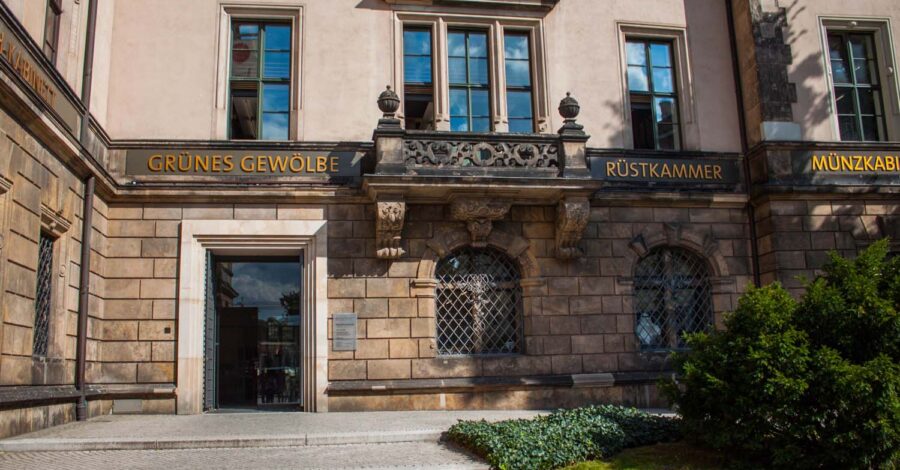
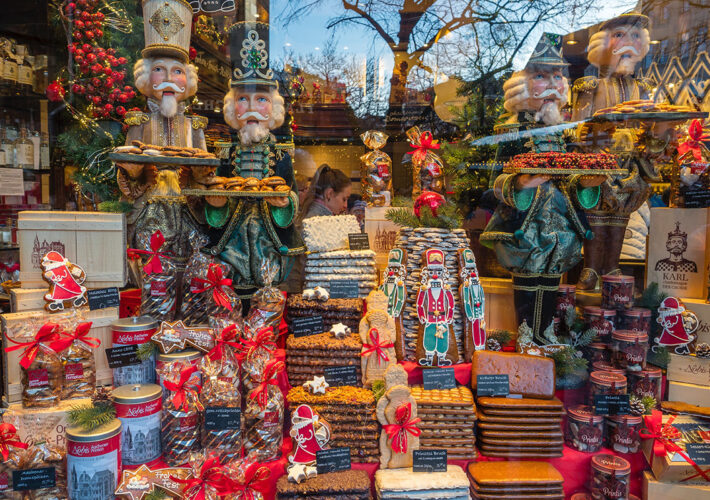
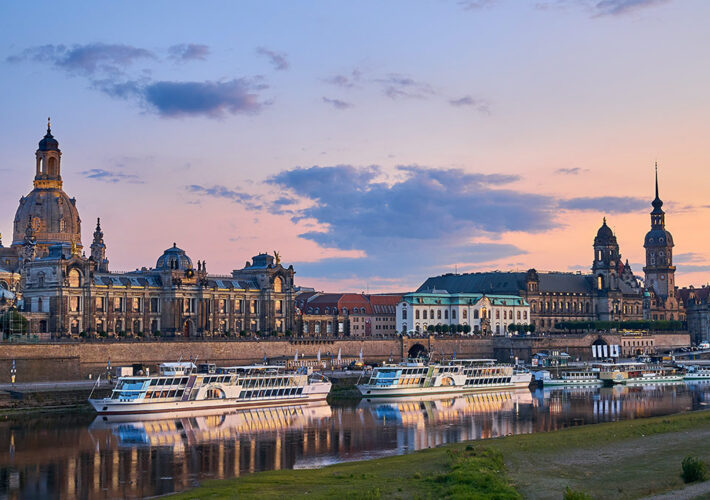
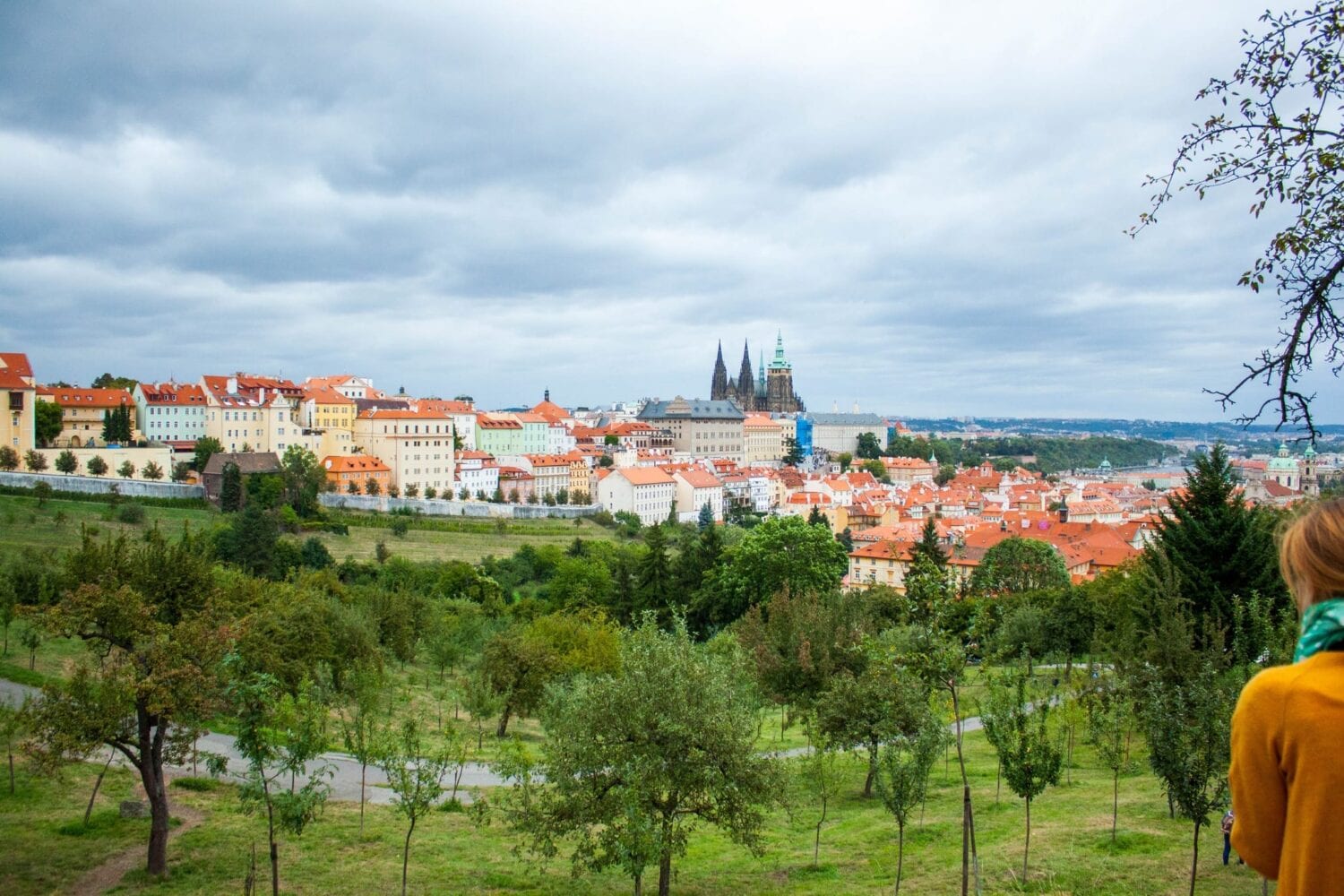
Leave a Comment